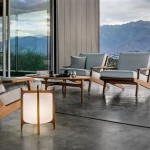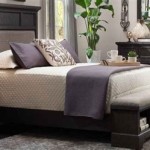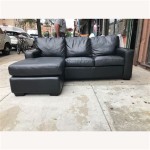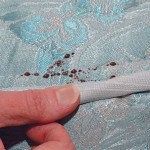What Is The Best Furniture Paint?
The allure of a fresh coat of paint to transform tired furniture is undeniable. Whether it's a vintage dresser in need of a modern makeover or a simple chair yearning for a splash of color, furniture paint offers an accessible and effective way to breathe new life into beloved pieces. But with an array of options on the market, navigating the world of furniture paint can feel overwhelming. The question arises: What is the best furniture paint? This query, while seemingly simple, necessitates a nuanced understanding of the distinct characteristics of various paint types, the intended use of the furniture, and the desired finish.
Understanding the Types of Furniture Paint
The first step in determining the best furniture paint lies in understanding the different types available. Each type boasts unique properties that suit specific applications and preferences.
Chalk Paint
Chalk paint has gained immense popularity due to its versatility and ease of use. Its matte finish creates a vintage, distressed look, often favored for farmhouse-style decor. Known for its ability to adhere to various surfaces without prior sanding or priming, chalk paint offers a forgiving application. However, its delicate nature makes it susceptible to scratching and water damage, requiring protective topcoats for durability.
Milk Paint
Derived from milk protein, milk paint offers a unique, traditional aesthetic. Its natural composition and ability to create a distressed, timeworn look are particularly appealing for antique restoration and achieving a rustic charm. However, milk paint requires careful preparation and application, often necessitating multiple coats for full coverage. Its thin consistency can also make it prone to cracking if not applied correctly.
Acrylic Paint
Acrylic paint, a staple for artists, is also a popular choice for furniture painting. Its water-based formula offers easy cleanup and a quick drying time. Acrylic paints are available in a wide range of colors and finishes, allowing for versatile applications. Their durability and resistance to fading make them ideal for high-traffic furniture. However, they may require a primer for optimal adhesion, especially on slick surfaces like glass or metal.
Epoxy Paint
Epoxy paint is known for its exceptional durability and resistance to moisture, making it a perfect choice for outdoor furniture or surfaces prone to wear and tear. Its glossy finish provides a protective barrier, safeguarding the furniture from scratches and stains. Since epoxy paint is formulated to create a hard, non-porous finish, it is often used for countertops, tables, and other surfaces that require a protective barrier. However, its thick consistency can make it challenging to apply smoothly, requiring careful attention to detail.
Factors to Consider When Choosing Furniture Paint
The best furniture paint for a specific project depends on a combination of factors, each playing a crucial role in achieving the desired outcome.
Surface Type
The surface of the furniture significantly influences the choice of paint. For porous surfaces like wood, chalk paint and milk paint often require less preparation. Conversely, smooth surfaces like metal or glass may necessitate a primer for better adhesion. Acrylic paint typically offers good adhesion to a variety of surfaces, while epoxy paint is specifically designed for hard, non-porous surfaces.
Desired Finish
The desired finish is a key consideration for furniture paint. Chalk paint typically results in a matte, distressed look, while milk paint offers a traditional, rustic aesthetic. Acrylic paint provides a range of finishes, from matte to semi-gloss, allowing for customization. Epoxy paint produces a hard, glossy finish, ideal for protection and durability.
Durability
The durability of furniture paint is essential, particularly for high-traffic items or pieces exposed to the elements. Epoxy paint holds the title of the most durable, offering exceptional protection against scratches, stains, and moisture. Acrylic paint provides good durability, while chalk paint and milk paint, though beautiful, require protective topcoats for lasting resilience.
Ease of Application
The ease of application is a crucial factor for many DIY enthusiasts. Chalk paint and acrylic paint are known for their user-friendly nature, offering forgiving application for beginners. Milk paint, while beautiful, demands meticulous preparation and careful application. Epoxy paint, while durable, can be more challenging to apply smoothly, requiring a steady hand.
Price
The price of furniture paint varies significantly depending on the brand, type, and quantity. Chalk paint and milk paint are often cost-effective options, while epoxy paint can be more expensive due to its specialized formula. Acrylic paint, while generally affordable, can range in price based on the specific brand and quality.

The Best Furniture Paint 2025 24 Blind Tested Reviewed

The Absolute Best Paint For Furniture 24 Brands Blind Tested Reviewed

Chalk Paint The World S Best Furniture Annie Sloan

Best Paint For Furniture Without Sanding 3 Minute Makeover

The Best Paint For Furniture What You Need To Know

10 Best Painted Furniture Colors

Top 10 Best Paint Colors For Furniture My Creative Days

The Easiest And Best Furniture Paint Without Sanding For A Beautiful Finish

Best Paint For Furniture And Raw Wood Sawdust Sisters

The Best Paint For Furniture Ultimate Tutorial








